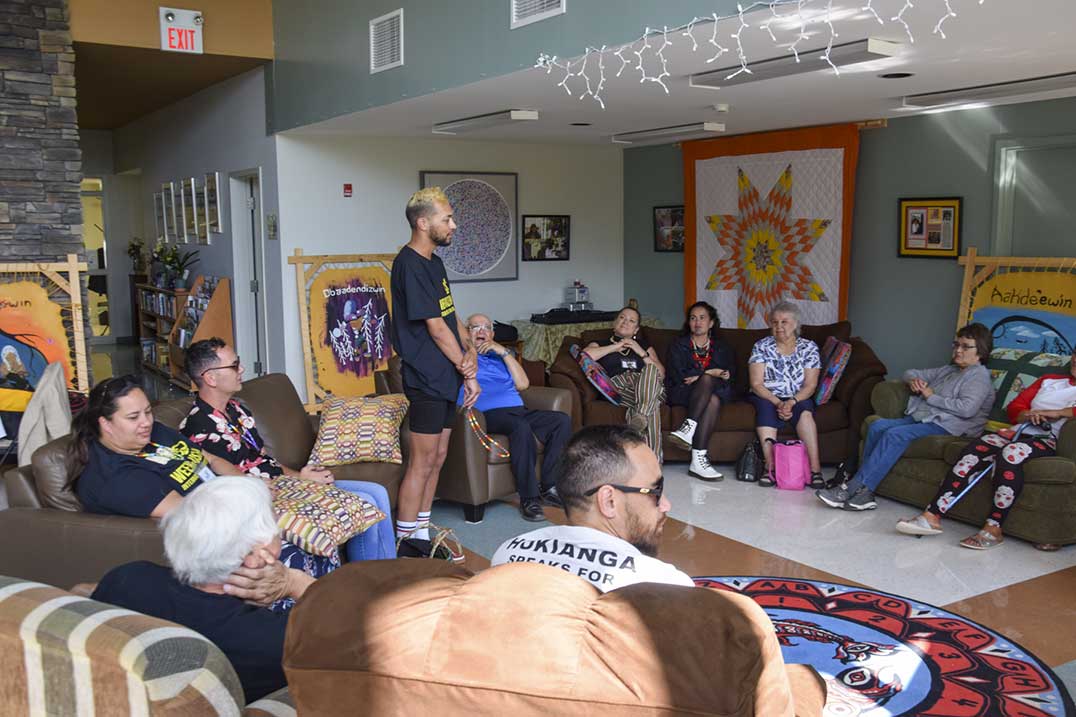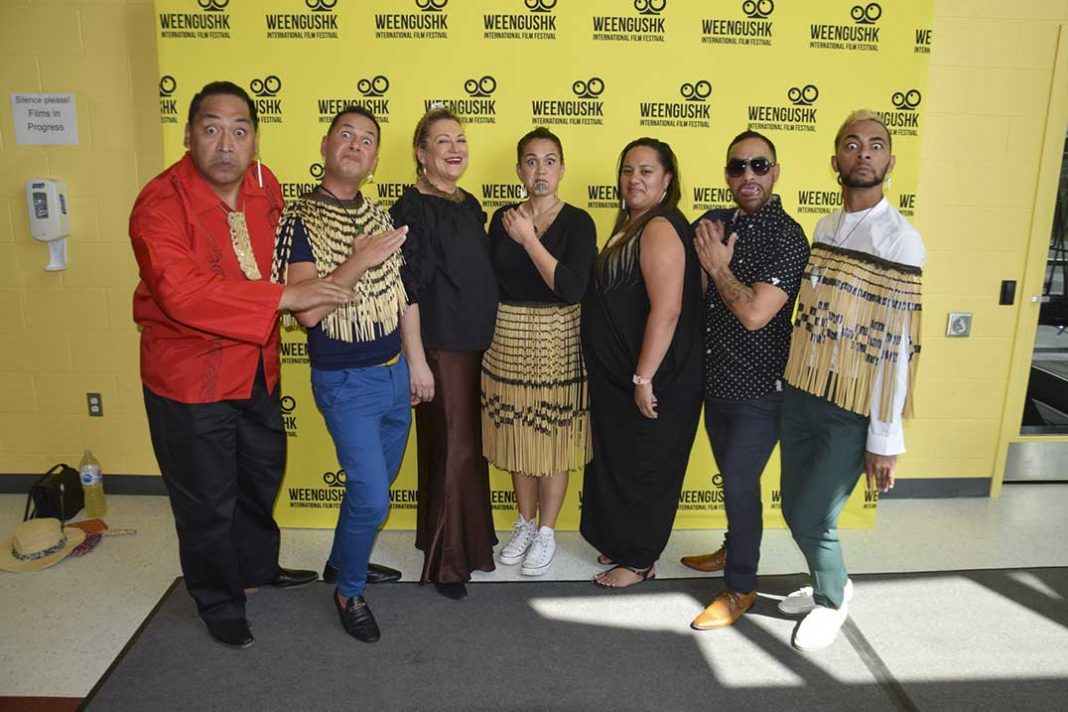M’CHIGEENG – While the performances of the Maori singers and dancers from New Zealand were outstanding and highly entertaining, the Te Hiku Media delegates (each media personalities in their own right) were dead serious in their message.
“With the loss of each elder in our community we lose a word, and with the loss of that word we lose a part of our selves,” said Peter Lucas Jones, general manager of Te Hiku Media, as he addressed a gathering of elders at the Anishnabemowin Gamig elders’ centre in M’Chigeeng.
Mr. Jones explained that he and his colleagues belong to Te Hiku Media, a charitable media organization that belongs collectively to the Far North Iwi (tribes) of Ngāti Kuri, Te Aupouri, Ngai Takoto, Re Rārawa and Ngāti Kahu. The non-profit was established in 1991 by the elders of those five closely related tribal groups who “share common ancestors, genealogies, tribal language variation landscapes and natural environments.”
Mr. Jones explained that what originated as a ground-based radio station has grown into a full digital communications hub for tribal radio and online television content.
“Māori language revitalization through original content creation and distribution is a core focus of Te Hiku Media, as is tribal archiving and innovation and development,” he said. “The purpose of Te Hiku Media is best articulated through the vision and mission of the organization which was confirmed by (a gathering of elders) and other native speakers of Te Reo Māori in 2013. We demonstrate how innovation in language revitalization succeeds when an Indigenous organization leads the corpus collection and digital media technology development.”
Mr. Jones and his compatriots shared their personal stories with the elders before going on to demonstrate the innovative incorporation of digital tools in assisting language learners to progress.
Key to the Te Hiku Media approach has been taking full control of the process of meeting digital technology head on and maintaining ownership of both the application code and the data generated from their work.

“There were lots of people who wanted to do this work for us, but what they really wanted was access to the data, because in today’s world data is money,” said Mr. Jones. “The wanted to mine our data for profit.”
Instead the Te Hiku Media group developed the expertise and approaches to not only collecting the data that allows for word recognition and transcription of the Māori language, but also developed the licencing necessary to maintain control of the data.
Mr. Jones spoke into the microphone of his laptop and the program not only responded to the spoken word with a written transcription, it flagged small nuances in pronunciation. Typing text into the program, a lilting Māori voice delivered the sentence in flawless flowing form.
The Anishinaabe elders who joined the Māori in their workshop were clearly impressed with the technological applications and the potential it holds for revitalization of their own languages.
Mr. Jones noted that the Māori people have not all been receptive to the revitalization process and that their best allies have been elders and the very young. “We have lost 30 years,” he said. “Those older than ourselves have been the most difficult to engage.”
But persistence has been the key and with the alliance between elders and youth, headway is being made. It hasn’t always been an easy path, he noted, but the path is getting wider and better travelled with each passing year.
Gene Bebamash, an elder at the centre, brought with him a folder that contained many photographs of the previous group of Māori visitors who stayed with him and his wife 30 years ago while visiting Manitoulin.






